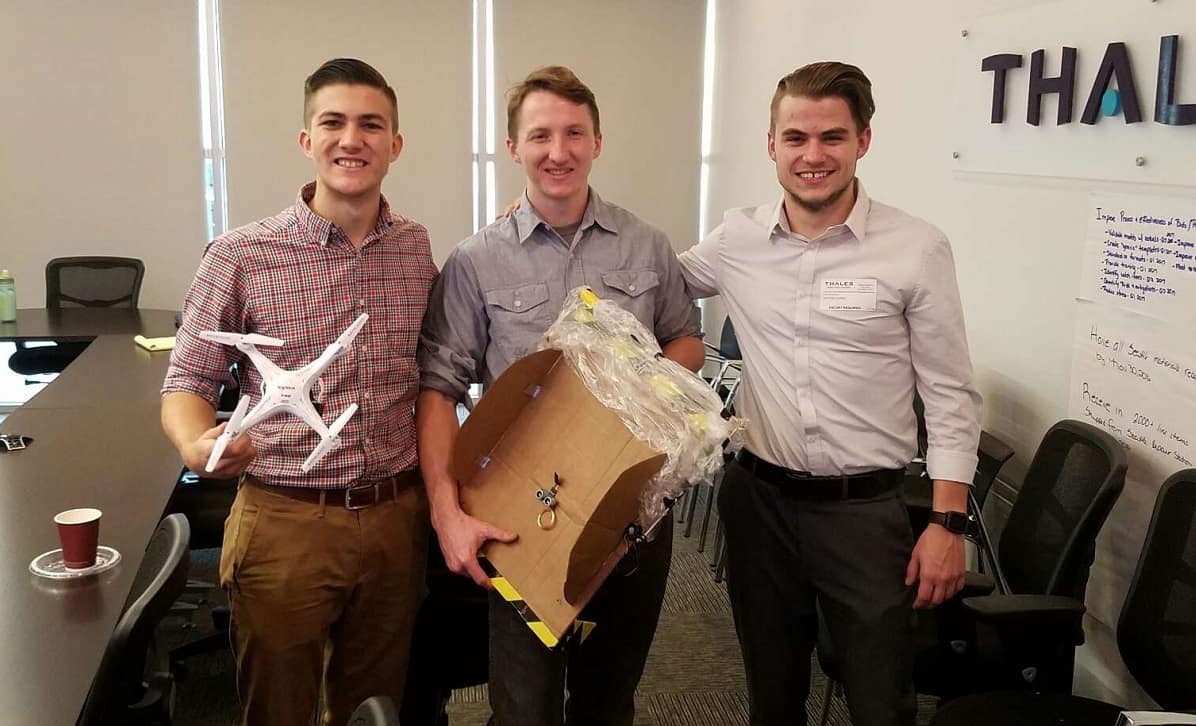In the Workshop: Designing an Award-Winning Secure Landing Pad for Drones

A group of Embry-Riddle students who designed a secure landing pad for unmanned aircraft systems have won an international engineering design competition.
Editor's note: This article was updated April 12, 2017.
“DroneShell” by Embry-Riddle software engineering student Jeremiah Lantzer, computer science student Tim Christovich and recent aerospace engineering graduate Kyle Cochran won a competition by Thales Group, a multinational company that designs and builds electrical systems for aerospace, defense, and transportation and security industries.
The Embry-Riddle students represented seven regions participating in the competition, which features students from France, UK, US, Netherlands, Singapore, China and Hong Kong. A video of each project is featured on the competition’s website; after receiving the most online votes from the public, a jury of Thales judges awarded the team a trip to the Thales Research Center in France.
The projects in the competition were all created using Arduino, an open source electronic prototyping platform that enables users to create interactive electronic objects.
The Embry-Riddle team began designing its project during a workshop last year hosted by Thales on campus. Since then, the group of software engineering students has won regional and national contests hosted by Thales.
The “DroneShell” is a self-sustaining wireless charging system that provides a solar-powered landing platform as well as a secure shell that covers the UAS once it lands and protects it from wind and dirt. Once secure, the drone can recharge for future flight. Currently, drones can fly about 20-30 minutes before it's time to recharge. By creating a network of DroneShells, the students envision charging stations that would create more commercialized opportunities for UAS.
"We are excited to gain exposure and experience what Thales means to the rest of the world," Christovich said. "It will be great to get feedback and learn how to take the next steps to form a venture."
The system could help revolutionize drones that are used for online delivery platforms such as Amazon.com.
Lantzer also said that the platform could adapt to any drone for multiple uses.
“In the cities of the future, ‘DroneShell’ could be installed anywhere and used for the UAV to make deliveries of products,” said Lantzer. “Delivery services can use the platforms to efficiently and securely recharge their technology once it lands.”
